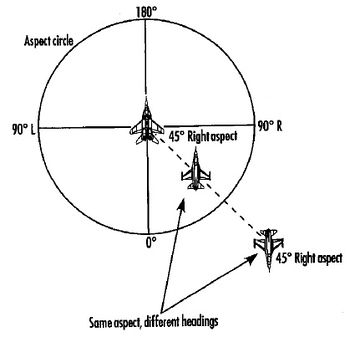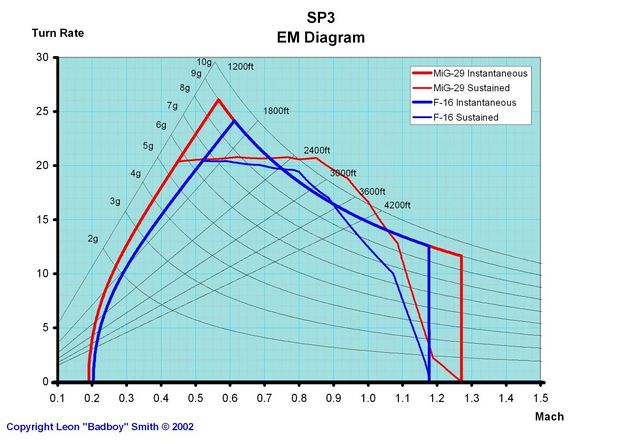Difference between revisions of "BFM tactics"
| Line 56: | Line 56: | ||
=Offensive BFM= | =Offensive BFM= | ||
| + | --Power for position== | ||
==Turn radius and Turn rate== | ==Turn radius and Turn rate== | ||
==Corner Velocity== | ==Corner Velocity== | ||
| + | ==Vertical turns== | ||
| + | ==Turning rooms== | ||
=Defensive BFM= | =Defensive BFM= | ||
Revision as of 14:11, 14 April 2017
Contents
Learning objectives
- Understand the concept of energy
- Understand the concept of lift vector
- Understand the concept of the corner speed (turn radius vs turn rate)
- Know the different pursuit curves. (Lead, lag and pure pursuit)
- know the high and low yoyo maneuvers
- know the difference between one circle and two circles turns and when to employ them
- know the flat and rolling scissors
- understand the concept of flying the elbow
- understand the concept of the egg (god's G)
- know how to use the dogfight mode, the HMCS and the radar modes linked to them
- know the brevity words usualy used in dogfight
Learning files
Geometry of Air Combat
Positional Geometry
Angle-off, range and aspect angle are terms used in BFM discussions to describe the relative advantage or disadvantage that one aircraft has in realtion to another
Angle-off
Angle-off is the difference measured in degrees, between your heading and the bandit's. This angle provides information about the relative fuselage alignment between the pilot's jet and the bandit's.
For example, if the angle-off between you and a bandit were 0°, you would be on a parallel heading with the bandit and the two fuselages would be aligned.
Aspect Angle
Aspect angle is the number of degrees measured from the tail of the target to your aircraft. Aspect angle is important because it indicates how far away your aircraft is from the target's 6 o'clock position.
Aspect angle has nothing to do with your heading. Note that the aspect angle stays the same regardless of wich way your aircraft is heading (see figure)
Along with a measure in degrees from the target's tail aspect angles are also described either right or left aspect.
Aspect angle is important because, if you know the aspect angle and range to the target you then know his lateral displacement or turning room from the target and lateral displacement is very important in BFM.
Attack Geometry
Attack geometry describes the path that the offensive fighter takes as he converges on the bandit. When you start an attack on the bandit, there are three distinct path or pursuit courses you can follow. These pursuit courses are lag pursuit, pure pursuit and lead pursuit.
If you are pointing your aircraft behind the bandit, you are in lag pursuit. if you are pointing directly at the bandit, you are in pure pursuit. If you are pointing in front of the bandit, you are in lead pursuit.
Lag Pursuit
Lag pursuit is used primarly on the approach to the bandit. Lag is also used any time an attacking fighter maneuvers out of plane (not in the same plane of motion as the fighter under attack)
You must have the ability to out-turn the bandit in order to fly lag pursuit for any length of time. The reason ?
In order to shoot a missile or the gun at the ennemy, you must pull your nose out of lag. If the bandit can turn at a higher rate, he can keep your nose stuck in lag and keep you from shooting him.
Pure Pursuit
Pure pursuit is used to shoot missiles at the enemy. Flying a pure pursuit course all the way into the bandit will lead to an overshoot.
For this reason, you should only point at the bandit when you are going to shoot.
Lead Pursuit
Lead pursuit is used to close on the bandit and is also used for gun shots. Flying a lead pursuit course if the fatest way to get to the bandit because you cut him off in the sky. The problem with establishing a lead pursuit course too early is that you will overshoot the bandit when you get in close unless you have a significant turn rate advantage.
If you're fighting a similar aircraft, such as the Mig29, you will not normally be able to stay in lead and will be forced into an overshoot.
It is important however to establish lead pursuit at the proper time in the fight because it is the only way that you can get into the gun envelope.
Offensive BFM
--Power for position==
Turn radius and Turn rate
Corner Velocity
Vertical turns
Turning rooms
Defensive BFM
Bandit outside your turn circle
Bandit inside your turn circle
overshoots
Guns Defense
Energy
- 0.55 Mach is around 366 knots
- Don’t pull back hard on the stick and unnecessarily bleed off energy
Video Examples
{{#invoke:Navbox|navbox}}





